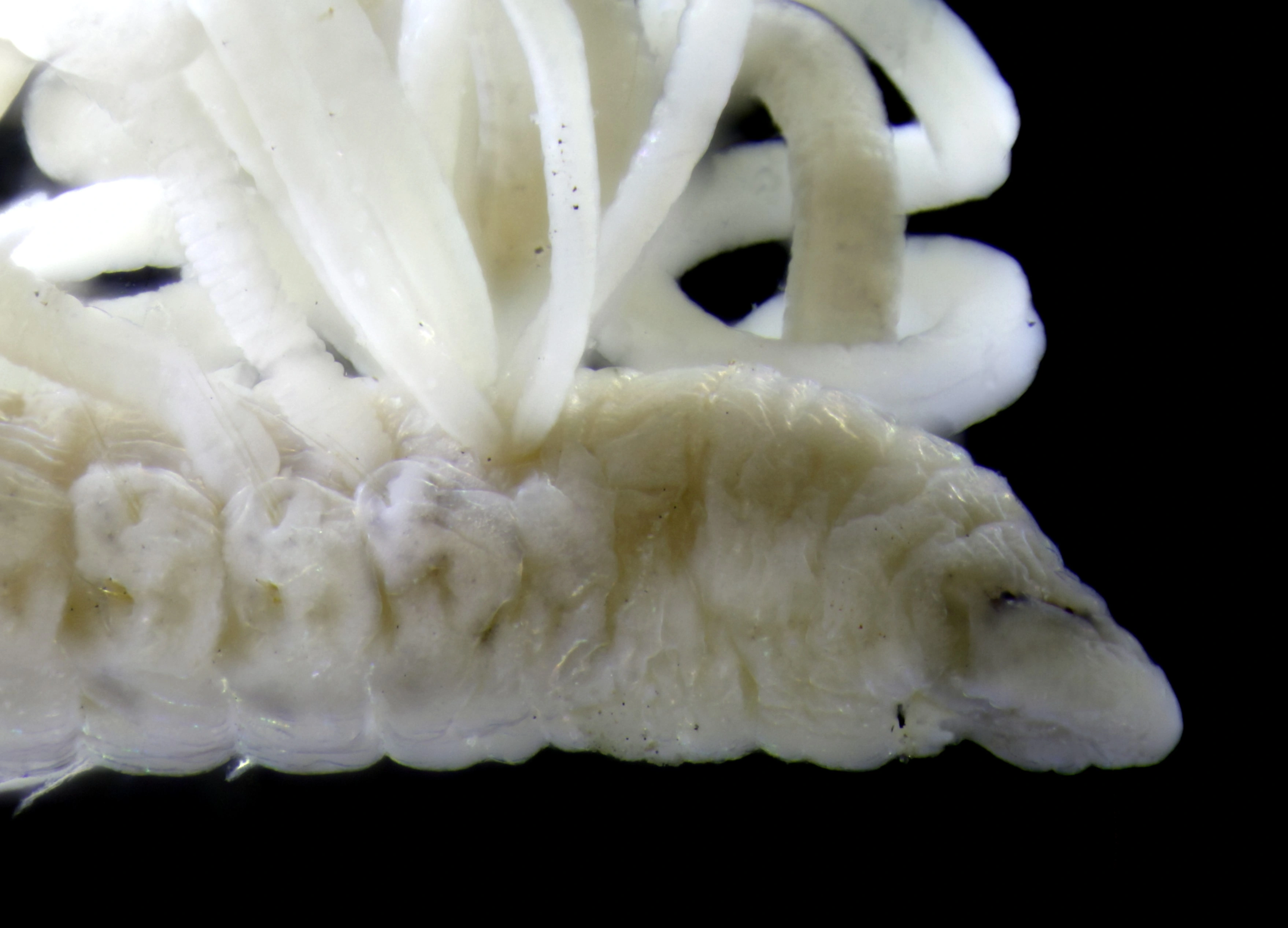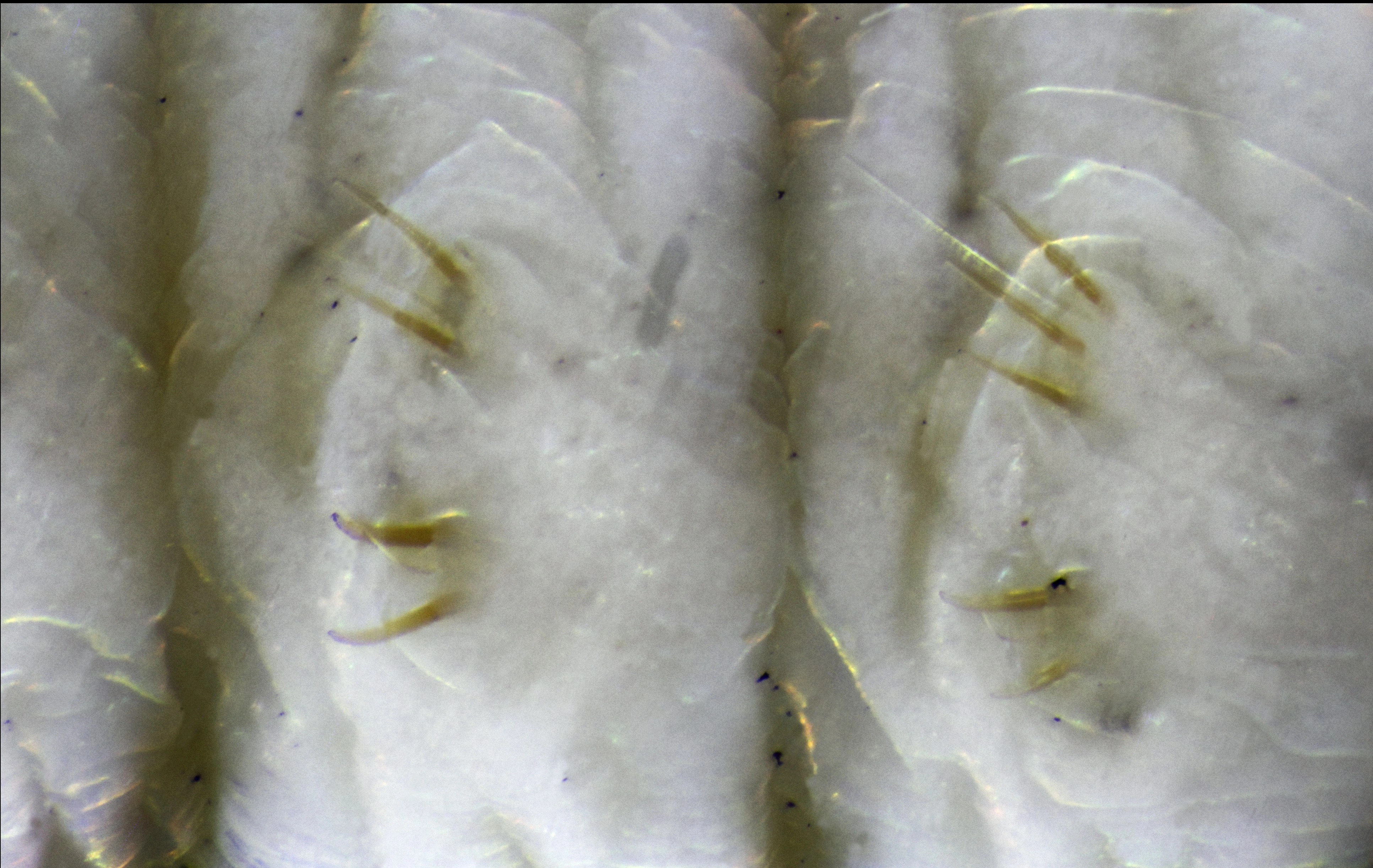Cirratulus cirratus
Cirratulus cirratus crawling on the seafloor.
Cirratulus cirratus is a cirratulid particularly common in polluted areas with mixed sediments or hard bottoms.
- Innhold
- Measurements
- Characteristics
- Look-alikes
- Biology, ecology and behaviour
- Habitat
- Recommended citation
Measurements
Up to 12 cm long.
Characteristics
This species is distinguished by its red-orange colour, the long and thin filamentous branchiae emerging from all along the body, and numerous long and thin filamentous tentacles arising from just behind the head. Two rows of 4–8 eyes are present on the head. The segments have both 2–3 short capillary chaetae and 2–3 stout spines emerging directly from the body wall. The chaetae and spines are not arranged in belts.
Cirratulus cirratus. Details of the head with rows of eyes.
Cirratulus cirratus. Details of the segments with spines.
Look-alikes
Two other congeners, Cirratulus caudatus and Cirratulus incertus, can be found in Norway. Cirratulus caudatus is easily distinguished from C. cirratus by the lack of eyes, while C. incertus has only two eyes, and long capillary chaetae anteriorly. At least C. caudatus is also found in anthropogenic environments.
Biology, ecology and behaviour
Species of Cirratulus are deposit feeders and collect food particles when crawling in the substrates they inhabit. Cirratulus cirratus is common in anthropogenic and polluted areas.
Habitat
They crawl above or slightly buried in hard substrates, algae, crevices and mixed bottoms. Generally, they are found in the intertidal or the shallower infralittoral zone.
Recommended citation
Grosse M. Cirratulus cirratus (O. F. Müller, 1776). www.artsdatabanken.no/Pages/313952. Downloaded <year-month-day>.


